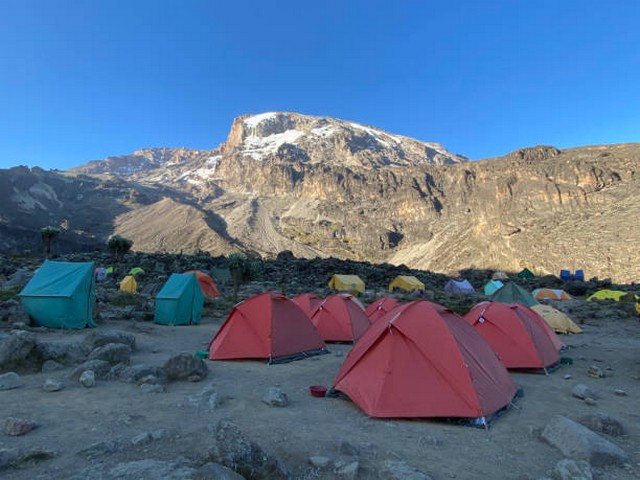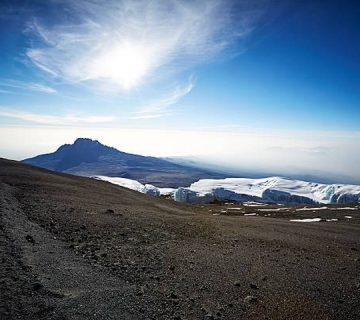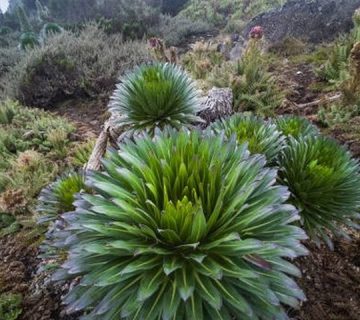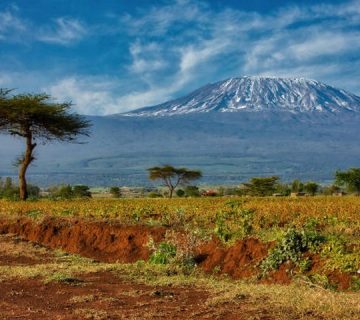Climbing Stories: Unveiling the Magic of Kilimanjaro Trekking and Cultural Storytelling
Welcome to the enchanting world of Kilimanjaro, where every step up the misty slopes is a step into the heart of Tanzanian culture and heritage. At Kilimanjaro Centre for Trekking and Ecotourism (KCTE), we believe that climbing Mount Kilimanjaro is not just about conquering the highest peak in Africa—it's about connecting with the soul of this legendary mountain through stories, traditions, and unforgettable experiences. Join us as we embark on an inspirational journey that intertwines the thrill of adventure with the rich tapestry of local lore.
The Heartbeat of Kilimanjaro: More Than Just a Trek
Kilimanjaro is not merely a mountain; it is a vast ecological and cultural monument, home to diverse communities that have lived at its base for centuries. These communities are the keepers of ancient tales and traditions, which they generously share with those who come to experience Kilimanjaro's majesty. When you book your trek with KCTE, you're not just signing up for a hike; you're stepping into a living museum of cultural richness.
The Spirit of Adventure Meets Cultural Immersion
Trekking Kilimanjaro offers more than physical challenge and scenic beauty. It is a cultural pilgrimage, where each campsite, each village, and each trail has a story waiting to be heard. Our guides, native to the area and fluent in both Swahili and English, serve not only as navigators of the mountain's terrain but also as ambassadors of its cultural heritage.
Why Kilimanjaro Trekking and Cultural Storytelling?
The unique combination of trekking and cultural storytelling enriches your climbing experience, making it more meaningful and personal. Engaging with the local culture allows you to see Kilimanjaro through the eyes of those who call it home. From the legendary Chagga warriors to age-old farming rituals, the mountain's cultural tapestry is as compelling as its sunrise views.
The Routes of Stories: Choosing Your Path
Each route up Kilimanjaro offers different landscapes and, equally, different insights into local culture and history. Choosing the right path can enhance your experience, blending physical endurance with cultural exploration.
The Machame Route: The Whiskey Route
Popularly known as the "Whiskey Route," Machame offers stunning vistas and varied climates. It's ideal for those who want a challenging climb coupled with the opportunity to engage deeply with local storytelling. The longer duration of the Machame route means more opportunities to interact with your guide and learn about the mountain's lore.
The Marangu Route: The Coca-Cola Route
Marangu, or the "Coca-Cola" route, is perhaps the most culturally immersive path. It is the only route with hut accommodations, providing more interaction with fellow trekkers and locals. It's often chosen by those who prefer a less strenuous climb and more time for cultural engagement.
The Lemosho Route: The Scenic Storyteller
The Lemosho route is celebrated for its scenic beauty and its gradual acclimatization. It's perfect for those who wish to slowly soak in the stories and the landscapes of Kilimanjaro, from the lush rainforests to the stark beauty of the moorlands.
Sustainability and Respect: Trekking with a Purpose
At KCTE, we are deeply committed to preserving both the natural environment of Kilimanjaro and its cultural integrity. We practice sustainable trekking methods and encourage our trekkers to engage with local communities respectfully, ensuring that tourism supports cultural preservation rather than undermining it.
Engaging with Local Communities
Our treks include visits to local villages and opportunities to participate in community projects. This not only gives trekkers a deeper understanding of the area's cultural dynamics but also helps distribute the economic benefits of tourism.
The Role of Storytelling in Cultural Preservation
Storytelling is a powerful tool for cultural preservation. It passes knowledge, traditions, and historical narratives from one generation to another. By participating in this age-old tradition, you help keep the local heritage alive, giving meaning and context to your climb.
Preparing for Your Journey: Tips for a Fulfilling Trek
Embarking on a journey up Kilimanjaro requires physical and mental preparation. Here are some tips to ensure you are ready for both the trek and the cultural experience:
- Physical Fitness: Start training several months in advance to build your stamina and endurance.
- Cultural Openness: Read about the local cultures and learn basic greetings in Swahili to show respect and openness.
- Sustainable Gear: Invest in high-quality, sustainable trekking gear to minimize your environmental impact.
FAQs: Kilimanjaro Trekking and Cultural Storytelling
What is the best time to climb Kilimanjaro?
The best climbing seasons are from June to October and from December to March, when the weather is most favorable.
How difficult is the climb?
Kilimanjaro is considered a non-technical climb, but it is physically demanding. Proper preparation and physical fitness are crucial.
How do I ensure respectful cultural engagement?
Always follow the guidance of your KCTE guides, ask permission before taking photographs, and engage with locals in a respectful and friendly manner.
Can I participate in local community projects?
Yes, KCTE offers opportunities to get involved in community projects, which can be arranged prior to your trek.
Embrace the Call of Kilimanjaro
Embarking on a trek up Kilimanjaro with Kilimanjaro Centre for Trekking and Ecotourism isn't just about reaching the summit; it's about journeying through the heart of Tanzania's culture and history. It's an adventure that promises not only breathtaking views but also a deeper connection with the people and stories that make this mountain truly magical.
Are you ready to experience the soul-stirring combination of Kilimanjaro trekking and cultural storytelling? Book your climb with KCTE today and be part of a journey that transcends the ordinary, where every step tells a story.




